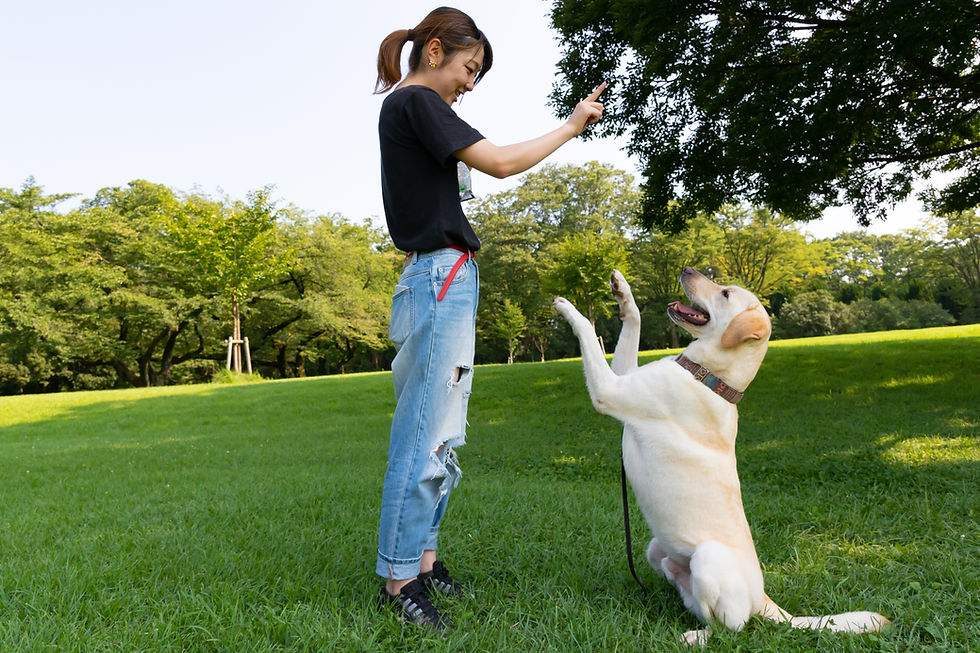What are clickers for?
- Awesome Dog Academy

- Apr 6, 2020
- 3 min read
Updated: May 17, 2021
You’ve probably heard about dog training clickers or seen them in your local pet supplies stores. Many people have a general idea of what they are for, but some people are stumped

about how to really implement them in their training routine. That’s what we’re going to talk about today!
A clicker is a small reinforcement tool which can be used to help your dog learn even faster. Many dog trainers implement them because they are easy, fun, and successful! Clicker training is often used with positive reinforcement dog trainers as a way to mark correct behavior, specifically, telling your dog what they are doing correctly to earn their reward.
Clickers create a sound which does not change in pitch or intensity, which provides consistence which dogs thrive upon. It helps your dog connect the dots between their behavior and the reward we are using to reinforce that behavior (which is usually a toy or treat). This is especially important when working on more advanced behaviors which require distance between yourself and your dog, where you cannot get the reward to your dog within the 3 seconds they require.
When beginning to use this tool, you want your dog to associate the sound of the clicker with a fun or delicious treat that they will enjoy. Much like Pavlov’s dog (ring a bell and the dog drools) we want your dog to hear the clicker and think “Yay! Reward!!” You do this by clicking the clicker and immediately feeding the dog a treat. Repeat it over and over: Click-Treat-Click-Treat-Click-Treat until every time your dog hears the clicker, they look at you for the treat. We call this loading the clicker which helps your dog understand that it’s a great sound to hear.
If you don’t have a clicker available, or choose not to use one, you can click a ballpoint pen, or use a verbal marker like “Yes!”, or even click your tongue to mark the good behavior your dog is performing. For deaf dogs, instead of using a clicker, some people use a thumbs up signal as their marker! Using these signals as a reward marker work just as well as long as you remain consistent. If you choose to say “Yes!” to your dog, you have to say it the same way each time, no matter your mood, or what has just happened lately. Our temperaments can often interrupt our training with vocal markers.
Now that you understand how clickers work, it’s time to start using them. Lure or cue your dog to perform a certain behavior, the moment your dog completes that behavior, click and reward your dog! You will notice that after a few repetitions, your dog will catch on and begin responding faster.

By using a clicker, or other marker, you encourage your dog and teach them what you want them to do. Once your dog understand what will earn them the reward, they will begin to repeat or increase those behaviors. So if we reinforce the behaviors we do want, and ignore the behaviors we don’t want, we end up with a dog who is excited to perform the exact things we want.
You won’t always need a clicker, but it helps our dogs understand and learn faster in the training process. You can slowly begin to phase out the clicker until you can use only the cue, but you want to do so slowly. Trying too quickly to remove a marker or the reward can cause your dog to backslide quickly into behaviors they did before. Dogs are driven by the chance that they might receive that reward, much like a person playing the slot machine.
Now that you know about how to use your clicker, you can have fun with your dog!



Comments